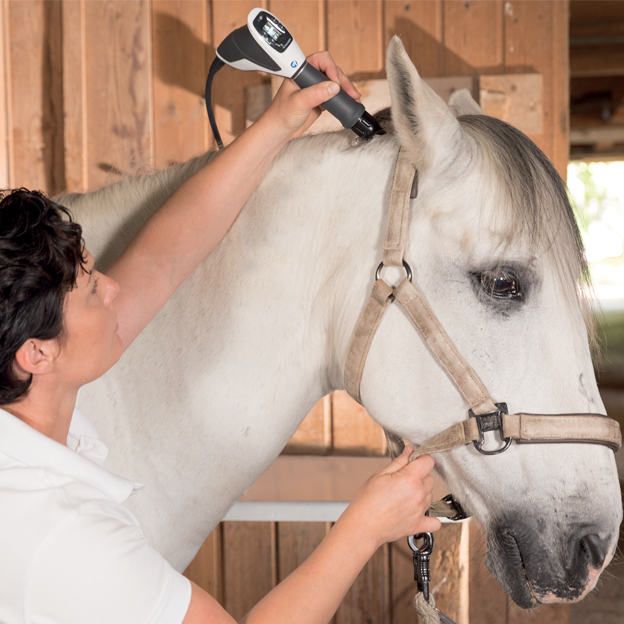Why Equine Therapy is Becoming a Preferred Alternative for Emotional Health
Examining the Performance of Laser Treatment in Equine Therapy for Injury Recovery
The analysis of laser therapy's efficiency in equine injury recovery depends upon several variables, consisting of recuperation time, discomfort mitigation, and tissue regrowth. Clinical research studies recommend notable enhancements in conditions like tendonitis and osteo arthritis, credited to improved cellular function and raised ATP manufacturing. Vets regularly observe superior results with laser treatment contrasted to standard methods, positioning it as a vital component in equine treatment. The requirement for continual surveillance and tailored therapy strategies can not be overemphasized. What details clinical evidence sustains these cases, and just how do vets apply these methods in technique?
Comprehending Laser Therapy
Laser treatment has actually become a pivotal device in vet medicine, particularly in the therapy of equine conditions. Known for its non-invasive nature and efficiency, laser treatment involves the application of specific wavelengths of light to boost tissue repair and lower swelling. This therapeutic method is progressively favored for its capacity to speed up the healing procedure in horses struggling with a range of musculoskeletal injuries and persistent conditions.
The key mechanism behind laser therapy is its capability to improve mobile features. Additionally, laser therapy promotes vasodilation, enhancing blood circulation and oxygen distribution to broken cells, thus speeding up healing.
In equine medication, laser treatment is specifically beneficial for conditions such as tendonitis, osteoarthritis, and wound healing. The method is admired for its pain-relieving properties, allowing equines to restore wheelchair and feature a lot more swiftly. Vets additionally value its marginal negative effects contrasted to various other therapy techniques, making it a trusted and secure alternative for equine treatment.

Exactly How Laser Treatment Functions

Upon absorption, these photons cause a series of biochemical changes, improving mitochondrial function and bring about raised adenosine triphosphate (ATP) manufacturing. This rise in ATP accelerates mobile metabolic rate, advertising tissue repair service and regeneration. Additionally, laser treatment regulates inflammatory feedbacks by influencing cytokine degrees and reducing oxidative stress and anxiety, thereby reducing discomfort and swelling.
One more significant facet of laser treatment is its function in improving microcirculation. The treatment promotes vasodilation, improving blood flow and oxygen delivery to broken tissues (Equine Therapy). This promotes the removal of cellular debris and supports the spreading of fibroblasts and collagen synthesis, vital for wound healing
Medical Evidence
The effectiveness of laser therapy in equine treatment has been confirmed with various professional researches, showcasing its healing prospective throughout an array of conditions. A research conducted by Turner et al. (2012) demonstrated that equines treated with low-level laser therapy (LLLT) for ligament injuries showed accelerated recovery compared to those obtaining conventional therapies.
Likewise, research study by Johnson and associates (2015) focused on equine muscle injuries, revealing that laser therapy substantially sped up muscle fiber regrowth and reduced muscle rigidity. Scientific assessments have shown that laser treatment can relieve persistent problems such as osteoarthritis.
Vet Insights

Vets likewise appreciate the flexibility of laser therapy. She directs out that laser therapy can be tailored to the particular demands of each steed, making certain ideal results.
In addition, veterinarians value the ability to integrate laser treatment with other treatment methods. This multimodal strategy can enhance total treatment efficacy, giving a detailed remedy for equine rehab. Such recommendations from seasoned professionals underscore the growing acceptance and application of laser treatment in equine medicine.
Practical Factors To Consider
A key element of applying laser therapy in equine therapy involves recognizing the useful considerations that guarantee its efficiency and security. First and primary, it is crucial to pick the suitable laser device, as numerous types differ in wavelength, power, and infiltration depth. Equine Therapy. Vets should be well-versed in these criteria to tailor therapy procedures successfully to each injury type
In addition, the frequency and duration of laser therapy sessions require careful preparation to maximize restorative benefits while reducing any potential negative impacts. Constant surveillance of the steed's reaction to therapy can assist essential adjustments in the therapy program. Developing a risk-free and regulated environment during therapies is likewise vital to prevent accidental exposure to laser discharges, which might harm both the horse and the handler.
Educating and accreditation of workers administering laser treatment are critical go right here to ensure correct strategy and to support safety and security criteria. In addition, preserving accurate records of each session, including laser setups and observed outcomes, is important for examining the overall performance of the treatment and for making data-driven choices.
Verdict
Laser treatment has become an efficient modality in equine injury rehab, offering substantial advantages in recovery time, discomfort alleviation, and tissue healing. Clinical researches emphasize considerable enhancements in problems such as tendonitis and osteo arthritis, associated to enhanced cellular function and enhanced ATP production. Veterinarian monitorings support these searchings for, highlighting remarkable outcomes contrasted to typical treatments. For optimum results, continual surveillance and customized therapy methods continue i thought about this to be necessary in leveraging the complete capacity of laser treatment in equine care.